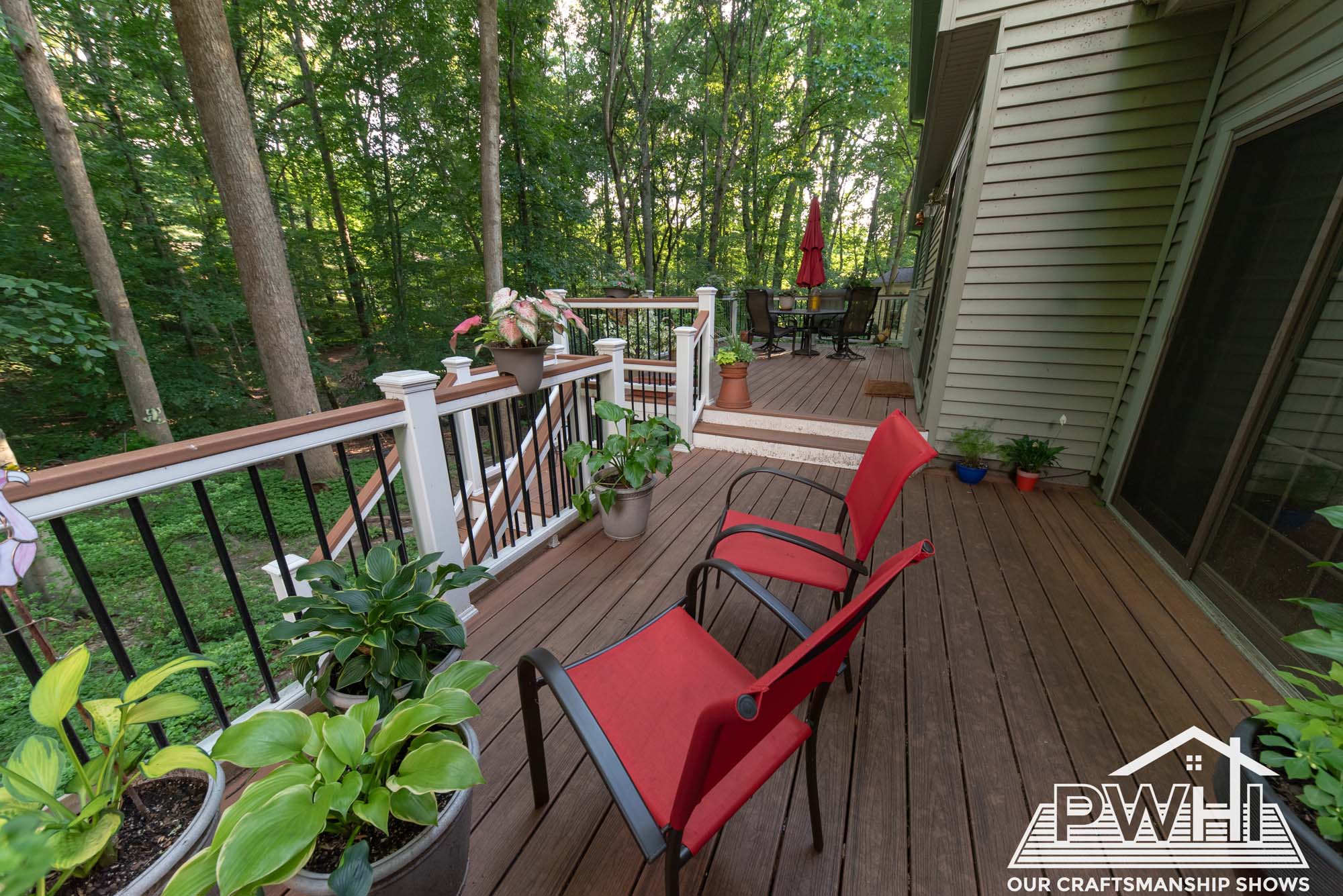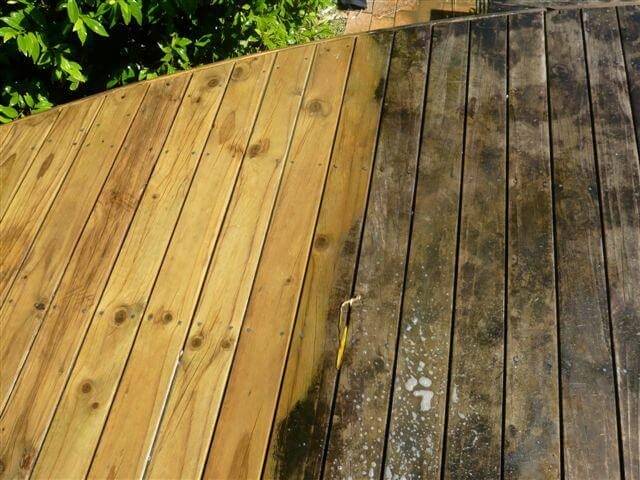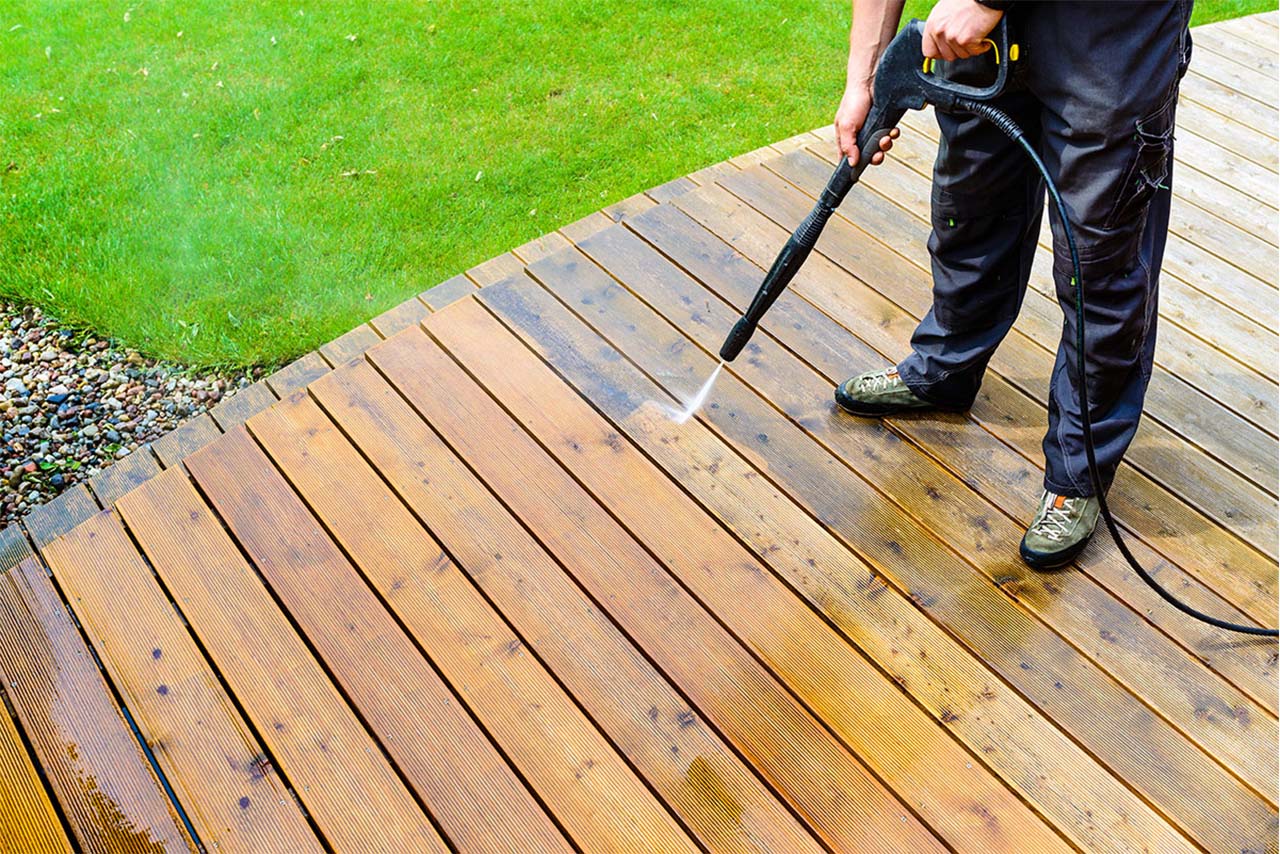Keeping your deck looking great can feel like a battle against Mother Nature. Rain, snow and direct sunlight can all diminish the quality of your wood. A poorly maintained deck also invites mold, mildew and pests that can destroy your decking and ruin your investment.
You should stain your deck on a regular basis whenever it needs it. But when is the best time to stain a deck? If you don’t stain your deck at the right time, it can ruin the finish and render the deck stain ineffective. This guide covers the most important things you need to know about deck staining.

Why Do You Need to Reapply Deck Stain?
Most people apply stain both to protect their decking from weather damage and to make the wood vibrant and beautiful. Without stain, the wood can fade under sunlight and moisture can seep into the wood pores. Over time, this degrades your decking, making it unsightly and weak. While staining your deck certainly protects it from the elements, that protection doesn’t last indefinitely.
Your decking may be worn or damaged by the following:
Direct Sunlight
UV rays from the sun cause your deck to fade over time. The deep and rich appearance of your stain begins to lighten and fade.
Hot Weather
Hot, humid weather can cause wood to swell when water penetrates the pores. Even if you live in a dry climate, an extreme surface temperature can dry wood out and cause it to crack.
Rain
Humidity is one of the greatest threats to decks because wood may begin to swell and warp when the boards get soaked in the rain.
Snow
The winter season can be unforgiving on decks as well. The constant freezing and melting of ice and snow can damage the finish of the wood and result in warps and cracks by the spring.
Pests
Termites, paper wasps and other insects that find a home under your deck may use the wood as a source of food or to build a nest. In addition to ruining your deck’s appearance, they become a nuisance to your family and can make your home unsafe.
Mold and Mildew in Your Wood Pores
When your wood boards become infested with mold and mildew, it can aggravate allergies, ruin the look of your deck and cause the wood to rot. Mold dissolves wood over time, so it can destroy your deck if you don’t kill the mold or replace the boards.
When Should You Not Stain a Deck?
To be sure that your hard work isn’t in vain, choose the right time to stain your deck. Working in the wrong weather conditions might do more damage than good and keep the deck stain from taking hold properly.
Early Spring
Many deck owners believe falsely that the early spring season is an ideal time to stain their deck. Due to frequent rain and humid air, this isn’t the best time. You don’t want to apply deck stain to damp wood because it’s saturated with moisture and the stain won’t soak in properly.
Summer
On the other hand, the summer season can be far too hot for staining your deck. Temperatures in excess of 90 degrees F cause the deck stain to evaporate much faster. You won’t get a good coating during your treatment and the wood will remain unprotected from the elements.
How to Tell If a Deck Should Be Stained
Deck stains are designed to keep moisture out of your wood while adding visual appeal. The easiest test you can perform to see if you need to reapply stain is to pour some water on the wood and examine the site. If you notice that the water beads and runs off the surface, your deck is still protected. If the water soaks the wood, it’s time to look at deck stains.
When is the Best Time to Stain a Deck?
Because you want to wait for days that aren’t excessively hot or humid, the best times to apply deck stains are in the late spring and early fall, when the weather is moderately warm and dry. Check the weather and find a time when it’s not expected to rain for two days before and following the deck treatment.
How Long Should a Deck Dry Before Staining?
Ideally, you want to let your deck dry several days following rainy weather and clean it before staining. To clean your deck, you can purchase deck cleaner designed to wash the wood and remove any dirt and microorganisms that may be inside the pores. Spray your deck down before applying the deck cleaner and then spray it down again. Let it dry before you apply your deck stain.
What Is the Best Temperature for Applying Wood Stain?
Try to find a day when the temperature is between 50 and 90 degrees F to use wood stain. This ensures the stain penetrates the wood and won’t evaporate quickly. The time you need to wait before using your deck depends on the type of wood stain you choose.
Oil-Based Stains
Oil-based stains provide deeper, richer colors but take a longer time to dry after application. They also need to be reapplied more frequently than water-based stains.
Water-Based Stains
Water-based stains generally take 24-48 hours to dry and are easy to apply. They provide protection against moisture, mildew and sunlight for a considerably longer period than oil stains.
Hire a Qualified Deck Stain Pro
Maintaining your deck can be frustrating and hard work. Prince William Home Improvement specializes in building and repairing custom decks for your home. Whether you need to repair damage to your decking or want to make sure it’s protected properly, we can get the job done correctly so you don’t need to worry. To learn more and schedule a consultation, give us a call at 703-492-1294.



